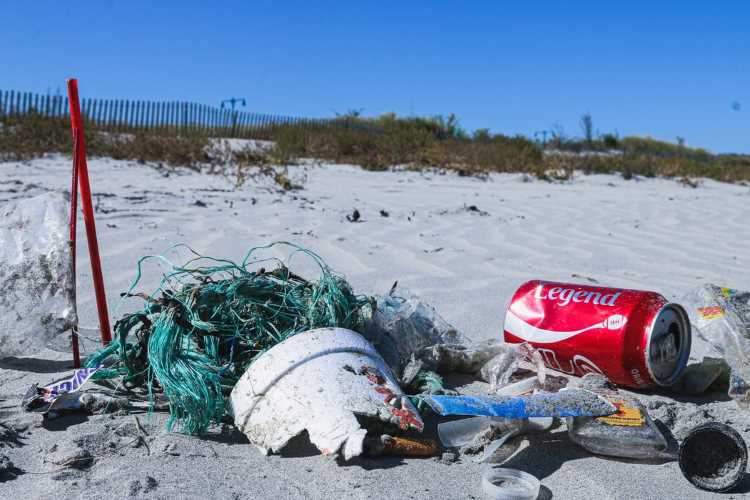
Plastic, once seen as a groundbreaking invention of the 20th century, has become a significant challenge in the 21st century for India. The country produces at least 26,000 tonnes of plastic waste daily, amounting to 3.46 million tonnes annually, ranking behind only the US and the European Union. Despite efforts like extended producer responsibilities and a 2022 ban on single-use plastics, compliance remains low, and the challenge continues.
Six leading research organisations — three from India and three from Australia — have embarked on an extensive research programme to tackle the issue of plastic and plastic waste in India. Their report, titled “The National Circular Economy Roadmap for Reducing Plastic Waste in India,” concentrates on three key areas: metrics and data, innovation and technology, and policy and behavior. These areas are crucial for effectively regulating and reducing plastic waste in India.
READ | Election year nightmare: Can Budget 2025 tame the fiscal deficit beast
While the roadmap sets a clear pathway, implementing its recommendations necessitates tackling existing infrastructural and economic limitations. India’s waste management infrastructure struggles to cope with the rapidly growing waste quantities, particularly in rural areas. Additionally, the informal sector, playing a vital role in plastic waste collection and recycling, requires formal integration and capacity building. Access to financing and technological advancements crucial for efficient plastic waste management, especially micro-plastics collection, and advanced recycling techniques, will necessitate innovative public-private partnerships and targeted investment initiatives.
The metrics and data section of the report seeks to demystify the supply chains of various polymers, quantify the extent of plastic waste, and understand its growth rate, final destinations, and leakages into waterways. Concurrently, the innovation and technology segment investigates waste management systems, recycling technologies, and potential innovations that promote a circular economy. The third section on policy and behavior examines current policies, business models, community initiatives, and behavior change programmes that can effectively address the plastic waste crisis.
This roadmap is driven by the Union government’s commitment to confronting the challenges of plastic waste. Introduced in 2016, it seeks to create a comprehensive understanding of the entire plastics value chain, envisioning a greener, more inclusive circular economy. This aligns with achieving Sustainable Development Goals and net-zero targets. Crucially, it aims to support the government of India in adhering to the expected standards of the Global Plastics Treaty by 2024.
Transitioning to a circular economy for plastics considers social, environmental, economic, and international factors. With plastic consumption expected to increase to 70.5 million tonnes by 2035, the roadmap not only highlights urgent needs and achievements but also proposes a transformative path for India’s plastics industry within the circular economy. However, significant hurdles remain. The lack of clear guidelines hinders achieving the objectives set out in the 2020 Ministry of Environment framework. Moreover, the policy document stresses the need for substantial investments in areas like waste regulation, micro-system plastic collection technology, and the incentivisation of waste segregation.
Despite international efforts, India faces obstacles in data transparency, technology adoption, and regulatory compliance. The report points out the challenges in integrating formal and informal sectors and underscores the immediate need to develop India’s data infrastructure.
Embracing a circular economy for plastics is not solely an environmental imperative; it presents a significant economic opportunity. Transitioning towards sustainable practices can unlock new job markets, foster innovation in bioplastics and biodegradable materials, and attract green investments. By leveraging the entrepreneurial spirit of its people and the potential of its vast consumer market, India can become a global leader in developing and implementing circular economy solutions for plastics, paving the way for a cleaner, more prosperous future.
The paper makes several recommendations: bridging knowledge gaps, advancing waste treatment technology, promoting plastic alternatives, and encouraging collaboration among various stakeholders for effective policy formulation. The report’s importance lies in its thorough assessment of the challenges impeding the development of a circular economy for plastics in India.
To effectively overcome these challenges, India must focus on accessible technologies, robust regulatory frameworks, and heightened awareness of sustainable alternatives. Strengthening collaboration between formal and informal sectors, encouraging circular business models, and overcoming funding obstacles are essential steps toward achieving a sustainable circular economy.
(Suresh P Singh is Senior Director, VeKommunicate, a public policy research and advocacy organiation. Dr Md Mashhood Alam is Senior Research Associate, BRCG Research & Development Foundation. Views are personal.)

